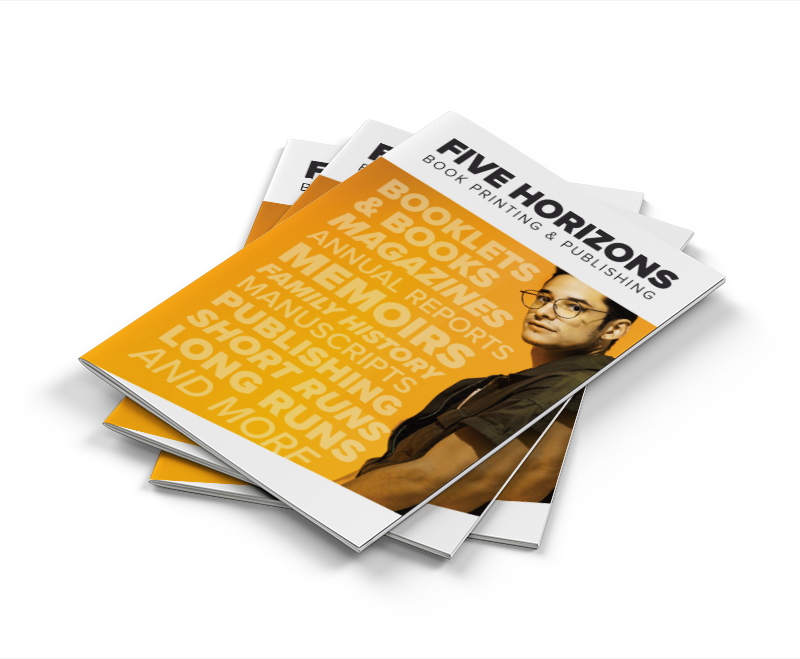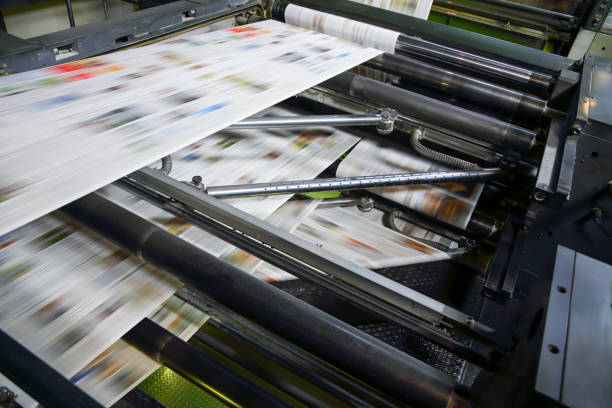






Greetings, aspiring self publishing authors in Australia! Are you ready to bring your book dreams to life? Look no further – this step-by-step guide is here to help you navigate the exciting world of Self publish book printing Australia !. Whether you’re a budding novelist, a non-fiction enthusiast, or a poet with stories to share, self-publishing opens up endless possibilities for you to showcase your work.
In this comprehensive guide, we’ll take you through every stage of the self-publishing book printing process, from manuscript development and design considerations to selecting the right print options and strategic marketing. We’ll equip you with the knowledge and resources you need to make informed decisions and turn your manuscript into a polished, professional-looking book.
So, grab a cuppa and get ready to embark on your self-publishing journey with us. Let’s dive into the wonderful world of self published book printing !

Embarking on a self-publishing journey can be an exciting and rewarding endeavor for aspiring authors in Australia. Whether you have a novel, a memoir, or a collection of poems, self-publishing gives you the freedom to bring your creative work to life and share it with the world.
But where do you start? How do you navigate the Australian publishing landscape? Let’s explore the initial steps you need to take in order to embark on your self-publishing journey in Australia.
Embarking on a self-publishing journey in Australia requires dedication, persistence, and a clear plan. By defining your goals, understanding the market, establishing a writing routine, connecting with writing communities, and creating a budget, you’ll be well-prepared to navigate the self-publishing landscape and bring your book to fruition.
When it comes to self-publishing your book, understanding the fundamentals of book printing is crucial. As a self-publisher in Australia, you have the freedom to make important choices regarding the printing book options, paper stocks, and binding methods that best suit your book.
Printing Options: There are two primary printing methods for self-publishers in Australia: offset printing and print-on-demand (POD), otherwise know as Printing Books Digitally. Offset printing is suitable for larger print runs and offers cost-effective solutions, especially for high-quality books. On the other hand, POD allows for smaller print runs and provides flexibility in terms of inventory management.
Paper Stocks: Choosing the right paper stock can significantly impact the overall appearance and feel of your book. Options include coated, uncoated and recycled paper, with varying finishes and weights. Consider the genre, target audience, and budget when selecting the most suitable paper stock for your self-published book.
Binding Methods: The binding method determines how the pages of your bound book are held together. Popular options for self-publishers include perfect binding, which provides a professional finish for novels or non-fiction books, and saddle stitching, ideal for magazines or booklets with lower page counts. Other options include spiral binding (typically used for applications such as cookbooks, as they lay flat), case binding, and comb binding.
By carefully considering these fundamental aspects of book printing, self-publishers in Australia can ensure their books are produced to the highest standards. Now, let’s delve further into the book printing process with a detailed table that compares the key features of offset printing and print-on-demand (POD).
| Offset Printing | Print-on-Demand (POD) | |
|---|---|---|
| Print Run | Large print runs | Smaller print runs |
| Cost | Cost-effective for large print runs | Cost-effective for small print runs |
| Inventory Management | Requires storage and inventory management | No inventory storage required |
| Quality | High quality, especially for color reproduction | High quality, suitable for most book types |
As you can see from the table above, both offset printing and POD have their advantages, depending on your specific requirements as a self-publisher. Understanding these options will help you make informed decisions that align with your budget, quantity needs, and quality expectations.
Now that you have a solid grasp of the book printing fundamentals for self-publishers in Australia, you’re one step closer to bringing your book dreams to life. In the next section, we’ll explore the essential stages of manuscript development and improvement, helping you turn your draft into a polished gem.

In the journey of self-publishing, one of the most critical aspects is transforming your initial draft into a polished gem of a manuscript. This process involves several stages that require careful attention to detail and dedication to crafting your story.
At the heart of every successful book is a captivating story. Take the time to develop your characters, plot, and setting, ensuring they are compelling and engaging for your readers. Consider the structure and pacing of your narrative, creating a seamless flow that keeps your audience hooked from start to finish. Craft your story with passion, weaving together elements that make it unique and unforgettable.
Once you have crafted your story, it’s important to seek constructive feedback from trusted sources. Join writing groups or connect with beta readers who can provide valuable insights and suggestions for improvement. Embrace their feedback with an open mind, using it to refine and enhance your manuscript. Constructive criticism can help you identify areas that need strengthening and empower you to make necessary revisions.
Editing and proofreading are essential steps in the manuscript mastery process. Editing involves reviewing your manuscript for clarity, consistency, and structure. Ensure that your writing is polished, concise, and error-free. Proofreading focuses on eliminating any grammatical, spelling, or punctuation errors. It’s crucial to have a keen eye for detail to ensure your manuscript is flawless and ready for publication.
By placing emphasis on crafting your story, seeking constructive feedback, and mastering the editing and proofreading processes, you can transform your draft into a polished gem of a manuscript. Remember that the journey of self-publishing is a labor of love, and investing time and effort into perfecting your manuscript will significantly enhance its impact and resonance with your readers.
In the world of self-publishing, design plays a crucial role in capturing readers’ attention and creating a professional-looking book. When preparing to publish your own book, whether it’s a novel, memoir, or non-fiction work, considering the design elements can greatly enhance its overall appeal. In this section, we will explore some important design considerations for your self-published book, including choosing the right cover design, optimizing the interior layout, and ensuring impeccable typesetting.
First impressions matter, and when it comes to books, the cover is the first thing that potential readers see. It’s important to choose a cover design that grabs attention, conveys the essence of your book, and connects with your target audience. Whether you decide to hire a professional designer or create the cover yourself, take the time to research current design trends and analyze successful book covers in your genre. Bold and eye-catching visuals, clear typography, and a cohesive design that aligns with the genre and theme of your book can make a significant impact on potential readers.
While the cover design is crucial for attracting readers, the interior layout and typesetting are equally important for providing an enjoyable reading experience. A well-designed interior layout enhances readability and professionalism, ensuring that readers can easily navigate through the pages and focus on the content. Pay attention to factors such as font selection, font size, line spacing, margins, and paragraph formatting. Consistency in typography and formatting throughout the book creates a cohesive and polished look.
Typesetting, the process of arranging text and illustrations on a page, is another critical design consideration. Proper typesetting ensures that the text is legible, visually appealing, and easy to read. It involves adjusting line breaks, hyphenation, word spacing, and ensuring optimal alignment and spacing between paragraphs and sections. A well-typeset book enhances the overall reading experience and adds a professional touch to your self-published work.
When it comes to design considerations for your self-published book, remember that the cover design creates the first impression, while the interior layout and typesetting contribute to the overall reading experience. By taking the time to carefully choose a captivating cover design and pay attention to the interior layout and typesetting, you can create a book that not only stands out on the shelves but also provides a visually pleasing and enjoyable reading experience for your audience.
When it comes to self-publishing your book in Australia, selecting the right print options is crucial. With the advancements in technology, there are various printing methods available, each with its own advantages and considerations.
Offset printing is a traditional printing method that offers high-quality results and is ideal for large print runs. It involves transferring ink from a plate to a rubber blanket, and then onto the printing surface. Offset printing provides precise color reproduction and the option to use a wide range of paper stocks. However, it may require a higher upfront investment and longer turnaround times.
Print-on-Demand (POD) is a popular choice for self-published authors due to its flexibility and cost-effectiveness. With POD, books are printed as orders are received, eliminating the need for large print runs and upfront inventory. This method allows for easy updates and revisions, making it suitable for authors who want to make frequent changes to their books. However, the unit cost per book is generally higher compared to offset printing.
When selecting the right print option for your self-published book, there are a few factors to consider:
By carefully considering these factors, you can make an informed decision and choose the print option that best suits your requirements.

When it comes to self-publishing, evaluating printing costs is a crucial step in creating a realistic budget for your book. Understanding the different factors that contribute to printing costs can help you make informed decisions and ensure that your expenses align with your budget. Consider the following when evaluating affordable book printing costs:
While evaluating printing costs is important, it’s equally crucial to understand royalties and profits to ensure that your self-published book is financially viable. Here’s what you need to know:
By evaluating printing costs and understanding royalties and profits, you can effectively budget for your self-published book and make informed financial decisions throughout the process. Keep in mind that careful planning and research are essential for achieving your desired balance between cost and quality and maximizing your book’s financial success.
| Factors to Consider | Printing Costs | Evaluating Printing Costs |
|---|---|---|
| Printing Method | Cost structures of offset printing and print-on-demand | Research and compare costs for the most suitable option |
| Quantity | Number of books to print | Estimate demand and avoid overspending |
| Paper Stock and Binding | Type of paper stock and binding method | Balance quality and cost based on content and target audience |
| Special Features | Color illustrations, embossing, foil stamping | Evaluate necessity and factor in associated expenses |

When self-publishing your book in Australia, it is crucial to understand the legal aspects and requirements. This section will guide you through the process of obtaining an ISBN, navigating copyright laws, and ensuring compliance with legal obligations in self-publishing.
An ISBN (International Standard Book Number) is a unique identifier assigned to every published book. It is essential for cataloging and distribution purposes. In Australia, you can obtain an ISBN through the Thorpe-Bowker website, the designated agency for assigning ISBNs in the country.
To obtain an ISBN, you’ll need to provide information about your book, such as title, author, format, and publishing date. Once you have obtained an ISBN, it must be prominently displayed on your book’s cover or copyright page.
Copyright protection grants exclusive rights to the creators of original works, including books, ensuring that others cannot reproduce or distribute their works without permission. In Australia, copyright protection is automatically granted upon creation of a work, but it’s essential to understand the specific legalities surrounding copyright in self-publishing.
When self-publishing, it is advisable to include a copyright notice on the copyright page of your book. This notice typically includes the copyright symbol (©), the year of publication, and the copyright owner’s name. Additionally, you may choose to register your copyright with the Australian Copyright Council for added protection and legal recourse if necessary.
Self-publishing comes with various legal requirements that must be followed to ensure compliance. Some important considerations include:
It’s essential to conduct thorough research and consult legal professionals, such as intellectual property lawyers, to ensure you comply with all applicable laws and regulations in self-publishing.
| Legal Considerations | Explanation |
|---|---|
| ISBN | Obtain a unique ISBN for your book to ensure proper cataloging and distribution. |
| Copyright | Understand the protection and rights granted by copyright law and include a copyright notice in your book. |
| Libel and defamation | Avoid making false statements or defamatory remarks to protect yourself from legal repercussions. |
| Plagiarism | Always attribute borrowed content properly to avoid infringing on the copyright of others. |
| Privacy | Ensure you obtain proper consent and respect privacy laws when using personal information in your book. |
| Consumer protection | Adhere to consumer protection laws, providing accurate product descriptions and appropriate refund policies. |
By understanding and adhering to these legal considerations, you can protect your work and ensure a smooth self-publishing experience in Australia.
This section focuses on the strategies and techniques for effectively marketing and promoting self-published books. As an author, it’s crucial to build an engaging author brand and connect with your readers through various marketing channels. Additionally, establishing relationships with bookstores and other distribution channels can help increase the visibility and reach of your self-published book. No matter if its a fiction or non-fiction novel, children’s books, photo books, or coffee table books, networking with the sales coal-face is imperative.
Building an author brand is essential for standing out in the competitive self-publishing industry. Your brand represents your unique voice, style, and values as an author, creating a lasting impression on readers. To build your author brand:

Engaging with your readers is key to building a loyal fan base and generating buzz around your self-published book. Here are some effective ways to engage with your readers:
In addition to engaging with readers, it’s crucial to establish relationships with bookstores and other distribution channels. Here’s how you can approach bookstores:
By implementing these strategies and techniques, you can effectively market and promote your self-published book, establish your author brand, engage with readers, and build relationships with bookstores and other distribution channels.
| Benefits of Strategic Marketing for Self-Published Books | Impact |
|---|---|
| Increased book sales and revenue | Creates awareness and drives sales |
| Builds a loyal fan base | Establishes long-term readership |
| Enhances author credibility and reputation | Boosts author’s influence and visibility |
| Expands author’s reach and market penetration | Reaches new audiences and demographics |
Throughout this comprehensive guide to self-publish book printing in Australia, we have explored the step-by-step process of bringing your book dreams to life. From embarking on your self-publishing journey to mastering the art of manuscript development, design considerations, selecting the right print options, and navigating the legalities and marketing strategies, we have covered it all.
Self-publishing offers aspiring authors in Australia the opportunity to share their stories with the world, bypassing traditional publishing gatekeepers and taking control of their creative destiny. By following the guidance and insights shared in this guide, you are now equipped with the knowledge and resources to successfully navigate the self-publishing landscape.
Remember, self-publishing is an exciting and rewarding journey that requires dedication, perseverance, and a commitment to continuous improvement. Embrace your passion for writing, hone your craft, and stay motivated throughout the process. With the right mindset and the tools at your disposal, you have the power to reach a wide audience and make your mark as a self-published author.
So, take the leap, believe in yourself, and let your creativity flow. Start your self-publishing journey in Australia today, and bring your book to life for readers to enjoy and be inspired by.
To embark on your self-publishing journey in Australia, start by refining your manuscript, researching your target audience, and setting realistic goals. Then, consider your publishing options and choose the approach that aligns with your needs and budget. Finally, follow the necessary steps to get your book published and distributed.
The fundamentals of book printing for self-publishers include understanding printing options, choosing the right paper stocks, selecting binding methods, and considering other essential factors such as trim size and cover finishes. These aspects play a crucial role in creating a high-quality printed book.
To turn your draft manuscript into a polished gem, focus on crafting a compelling story, seeking constructive feedback from beta readers or writing groups, and investing time in the essential editing and proofreading processes. These steps will help refine your manuscript and ensure it is ready for publication.
When designing your self-published book, it is crucial to choose the right cover design that grabs readers’ attention and reflects the content. Additionally, consider the interior layout and typesetting to create a professional and visually appealing book that enhances the reading experience.
To select the right print options for your self-published book, consider factors such as budget, quantity, and desired quality. Explore different printing methods such as offset printing and print-on-demand, and choose the option that best suits your needs and aligns with your publishing goals.
Effective budgeting for your self-published book involves evaluating printing costs, considering distribution expenses, and accounting for marketing and promotional activities. It is essential to have a clear understanding of your financial goals and allocate your resources wisely to maximize your book’s success.
In the Self publishing book printing Australia process, it is essential to obtain an ISBN for your book, understand copyright laws to protect your work, and comply with legal requirements for publishing and distribution in Australia. Familiarize yourself with these legal aspects to ensure a smooth and legally compliant publishing journey.
Effectively marketing and promoting your self-published book involves building an author brand, engaging with readers through various marketing channels, and establishing relationships with bookstores and other distribution channels. Leveraging social media, email marketing, and book launch events can also help create buzz and attract readers to your book.
Copyright © 2025 Five Horizons. All Rights Reserved.